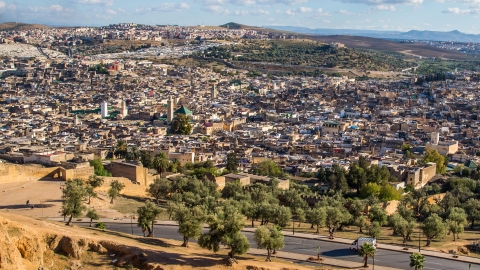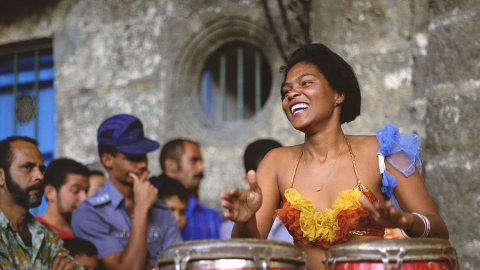In the past, Turkmenistan had a very turbulent history. Because on the way to prosperity, many armies passed through here. History records that in the 4th century BC, Alexander the Great conquered this territory when he and his army of warriors came to South Asia. This was also the time when the "Silk Road" was formed - the main trade route between Asia and the Mediterranean region of Europe. The remaining historical relics in Merv, Urgench or Nisa prove the heyday of Turkmenistan in the past.
The magnificent capital Ashgabat
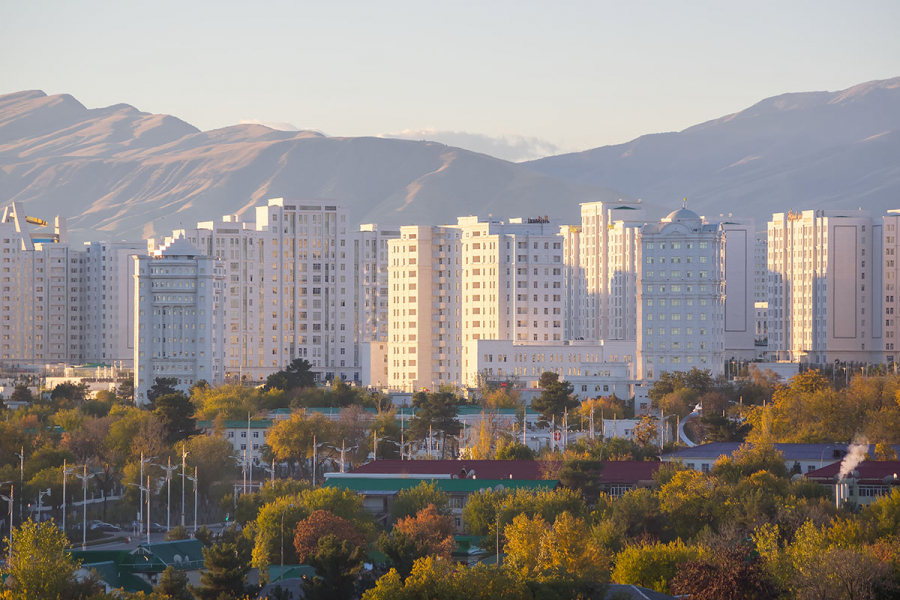
The city is built and planned quite modernly.
Situated on the edge of the Karakum Desert, Ashgabat is a modern city that shines with an exotic glamour. White marble buildings with golden roofs and unusual architecture stand majestically on wide streets. The buildings are surrounded by carefully tended gardens, fountains, and monuments that are lit up at night.
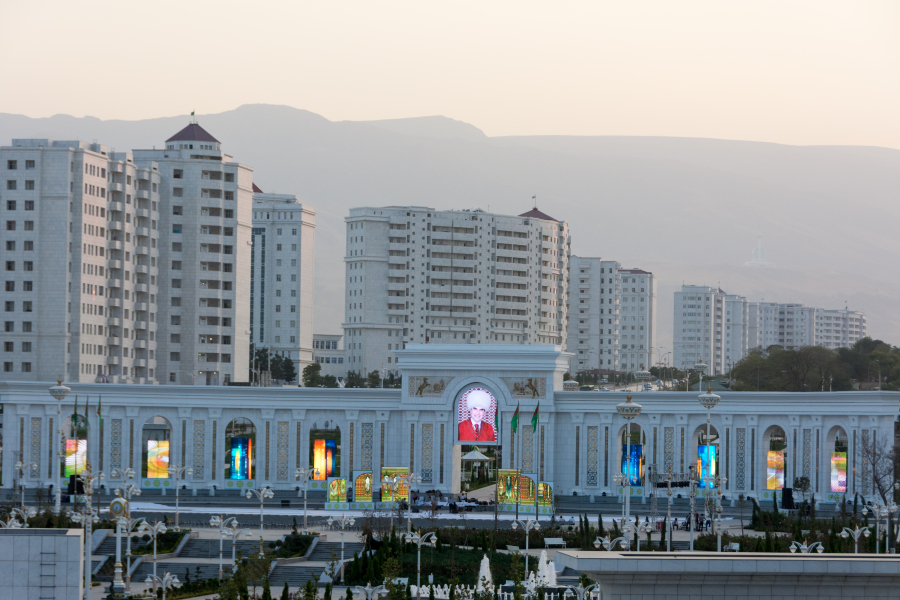
The capital Asghabat is also known as the "white city" because it has more than 500 houses built from white marble.
The streets of the capital Ashgabat are quite airy and clean. Although the capital was built on the edge of the border in the arid Karakum desert with harsh weather, quite cold in winter and very hot in summer, visitors will be surprised by the green beauty of the city. The rows of shady trees running along the crisscrossing roads seem to embellish a city built entirely of white marble. A quiet atmosphere next to the modern shape of the newly built buildings.
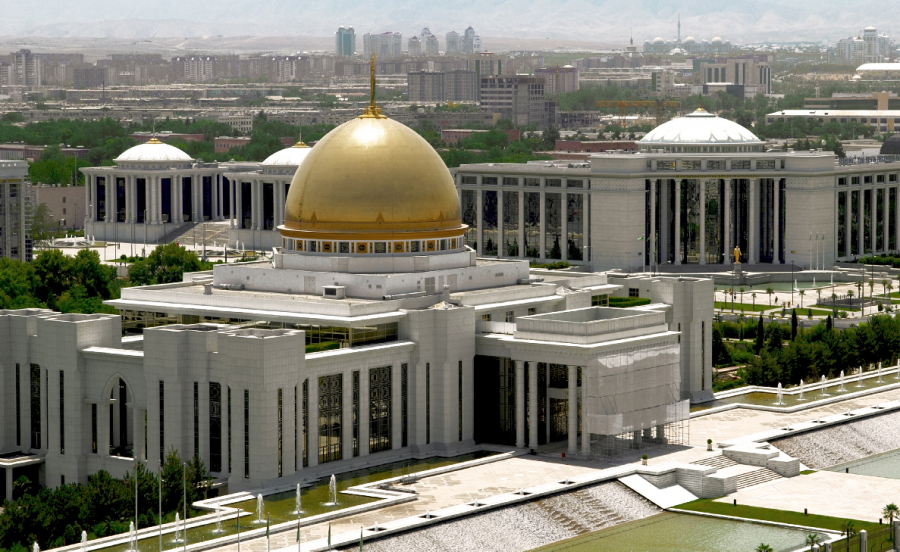
The Presidential Palace, one of the impressive structures of Asghabat.
In 2013, Ashgabat entered the Guinness Book of Records for having the most marble buildings in the world. It is known that more than 500 buildings in the city were built from 4.5 million cubic meters of imported Italian marble. At night, the white buildings of Ashgabat look brilliant thanks to the colored lights, making the entire avenue even more magical.
Silk Road Heritage
Turkmenistan has three world cultural heritage sites all located on the ancient Silk Road: the Kunya ruins in Urgench, the Parthian fortress of Nisa 18 km southwest of the capital Ashgabat and the thousands-year-old archaeological site of Merv near the city of Mary. Among these, Merv is considered a very important oasis city on the Silk Road, connecting with the economic, political and religious center of Bukhara in Uzbekistan at that time.
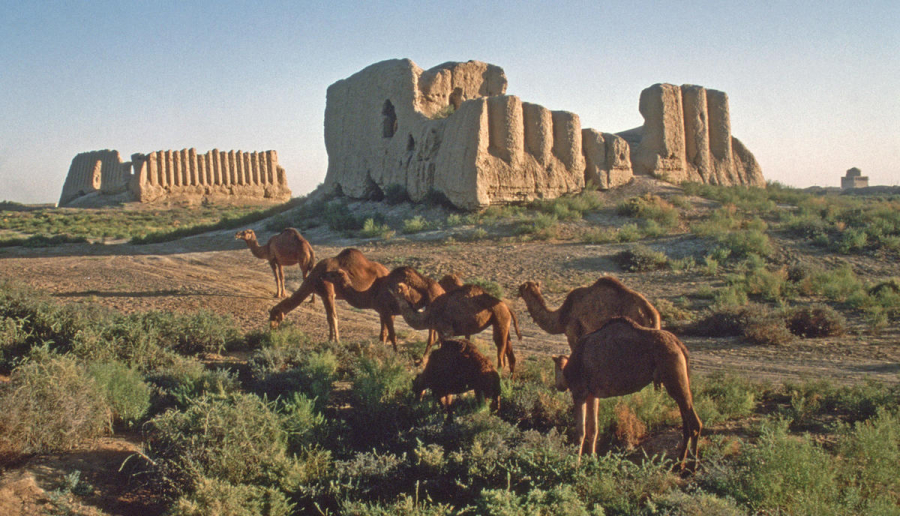
To this day, throughout Turkmenistan there are still many historical relics of the golden age of the "silk road".
Merv is located about 40 km from Mary (the second largest city in Turkmenistan), listed by UNESCO as a world cultural heritage site that needs to be preserved. The Erk - Kala area is the center of the ancient city of Merv, built around the 6th to 7th century, the gateway to ancient Persia of the Khemanit emperor, with an area of about 20 hectares, surrounded by rough brick walls of which traces can still be seen today.
Many ancient citadel relics

Gyaur - Kala is known as the “Fortress of the Infidels”...
Gyaur - Kala is known as the "Fortress of the Infidels", built by Emperor Antiochos Soter (280 - 261) around the 4th century BC, with a wall about 230 km long. This place also preserves the ancient Bible Avesta - Gathas, written by the mysterious Persian religious leader Zarathustra and some ruins belonging to the followers of Zoroastrianism (Zoroastranism, also known as Zoroastrianism, is one of the oldest monotheistic religions in the world).
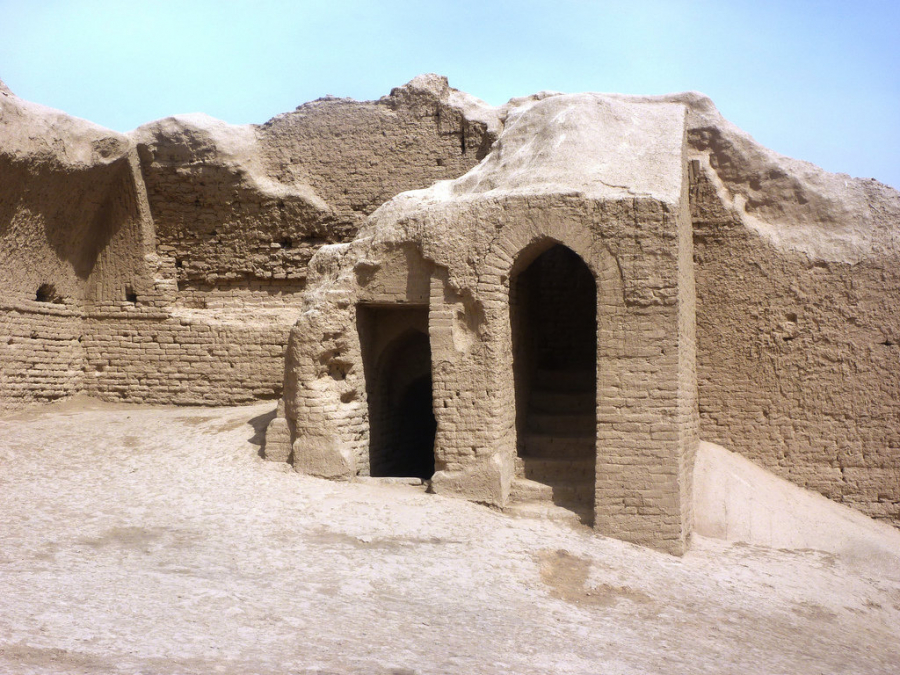
The Greater Monument is still preserved today.
The two buildings Greater and Lesser Kyz Kala, also known as “Castle of the Maidens”, built from the 6th to 12th centuries, have quite special earthen walls that still remain after the ups and downs of history.
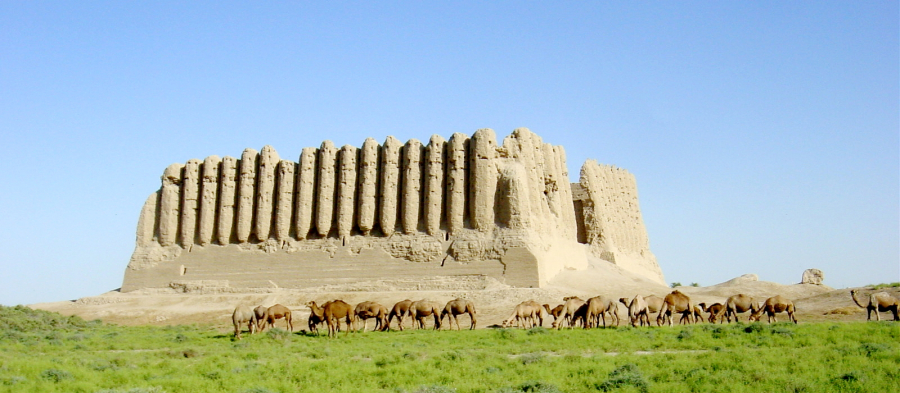
Lesser Kyz Kala relic, a mark of a heroic period in the history of Turkmenistan.
In addition, the Sultan Sandzhar Museum from the mid-12th century, which was the mausoleum of the Seljuk Emperor, with its magnificent dome architecture, stands out in the middle of the oasis land that caravans traveling in the Karakum desert can see.
Mary, or Margiana, is an ancient Muslim city. The city's name comes from the Murghab River - a symbol of the birth of an agricultural nation in this region about 4,000 years ago. Mary was once praised as the "Pearl of the Orient" second only to Baghdad between the 8th and 13th centuries. However, the city was later destroyed by the horses of the Mongol armies.
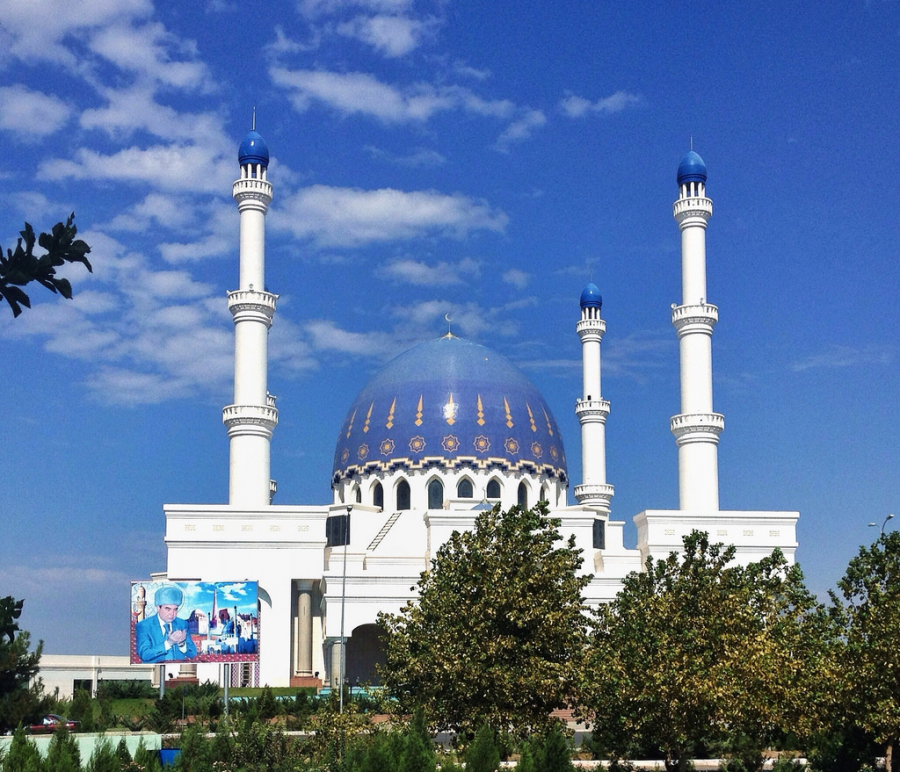
Gurbanguly Hajji Mosque with its striking white color and distinctive blue dome.
Today, Mary is the financial center of the cotton and gas industry, and is also an important transportation gateway of Turkmenistan. The highlight of the city of Mary is the Gurbanguly Hajji Mosque (also known as Mary Mosque), built from 2001 to 2009, with its striking white color and blue dome, and four towers rising proudly into the blue sky.
Traditional market

A variety of fruits are sold in the market.
Like many places in Asia, markets are an important part of Turkmenistan culture. Gulistan is one of the largest and oldest markets in the country. Gulistan Market is located in the city center, so it is a good place for visitors to chat with locals and enjoy special dishes of Turkmenistan cuisine.

Visitors can experience typical dishes of Turkmenistan when visiting traditional markets.
Or another market located on the outskirts of Asghabat city called Tolkuchka Bazaar will be a great destination for tourists to learn about the culture, products and cuisine of this Central Asian land. Coming to Tolkuchka market, tourists can buy products such as clothes, fur hats, carpets, scarves or local souvenirs as gifts at affordable prices. You can negotiate with the seller to give the most reasonable price.
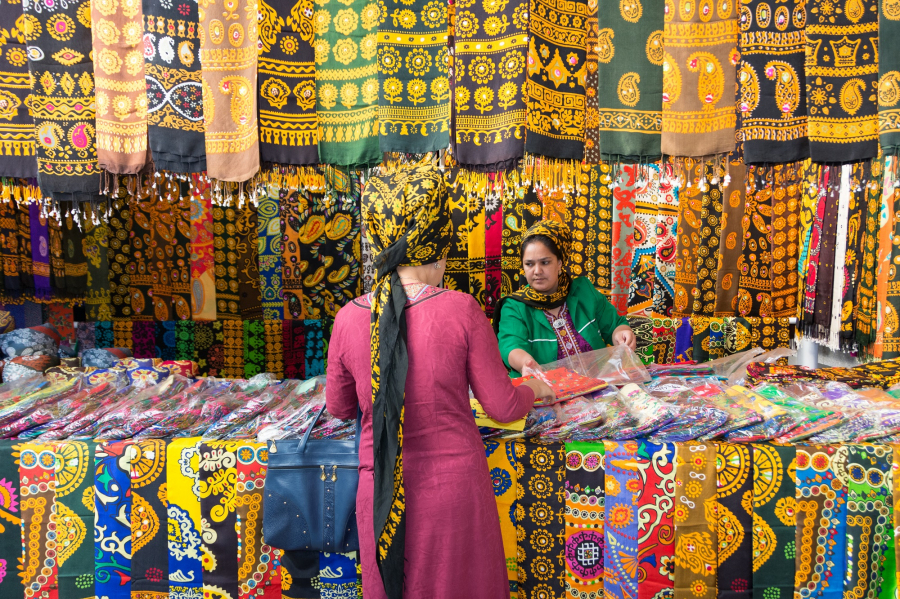
Tolkuchka Market - one of the busiest markets in the capital Ashgabat.
According to the advice of tourists who have been to Tolkuchka market, the best time to shop is from 9am to 1pm. The market closes quite early, at 2pm every day.
With an area of 448,100 km², Turkmenistan is the 52nd largest country in the world. More than 80% of the country's territory is the Karakum Desert, the climate is arid, with little rainfall. In the summer, temperatures can reach up to 50 degrees Celsius.

























